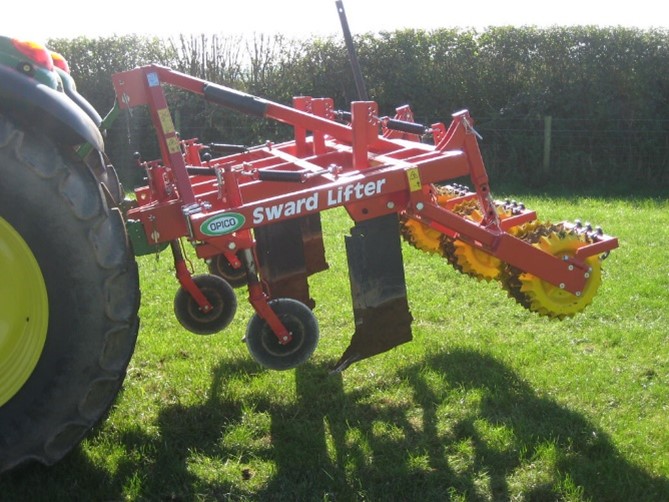Sub-Soiling - Is It Worth Doing
 ‘I’ve always sub soiled for my maize so l will again this year.’ This is a statement made by many farmers. Without doubt compaction in the soil profile can be the biggest reason for reduced yields in both grassland and arable crops. That does not mean that every field will need an annual sub-soil as it is both expensive and can be counterproductive. In order to establish if sub-soiling is required first, dig a series of holes in the ground across the field. This will highlight any sub surface compaction and also whether it is across the whole field or not. The key is to establish the depth of compaction before deciding on the method of removal.
‘I’ve always sub soiled for my maize so l will again this year.’ This is a statement made by many farmers. Without doubt compaction in the soil profile can be the biggest reason for reduced yields in both grassland and arable crops. That does not mean that every field will need an annual sub-soil as it is both expensive and can be counterproductive. In order to establish if sub-soiling is required first, dig a series of holes in the ground across the field. This will highlight any sub surface compaction and also whether it is across the whole field or not. The key is to establish the depth of compaction before deciding on the method of removal.
Surface compaction caused by heavy winter rain, poaching etc., is best removed with an aerator which will deal with compaction down to around 3 to 4 inches. Ploughing to 6-9 inches will alleviate any problems at those depths but beyond that sub-soiling will be needed.
If you decide that sub-soiling is required, then your next decision is what type of machine to use. In grassland if you wish to minimize disturbance to the crop a sward lift would be the best option, however in arable crops or if reseeding the more conventional sub-soiler will be fine.
General rules for Sub-soiling:
- Sub-soil below the problem depth. The sub-soil tine works by heaving the ground upwards and introducing fissures in the soil. These fissures radiate from the tine at an angle of about 450 so if the tines are too far apart there will be parts of the soil profile that are left undisturbed. It may be better to work the tines closer together if sub-soiling at shallower depths.
- Dig a few holes after the sub-soiler has passed through. Is all the soil moved where the pan is? Digging the holes in the area between where the sub-soiler leg has passed will highlight if any areas are missed.
- If there is a problem with undisturbed soils go deeper, or more likely go closer. Perhaps consider driving to straddle the previous pass if the pan is shallower and there is undisturbed ground between the legs.
- Consider the movement of any water in the soil. Try and drive across any land drains not parallel to them. Sub-soiled ground will move water in the profile, and it will be more efficient if it is moving the water to land drains. If the land is not drained, work up and down any slope not across it.
- Mole Ploughing is NOT sub-soiling. Mole Ploughing should be left to the summer or autumn and is a method of creating temporary drains which can then move water to land drains backfilled with gravel. It will help to remove a pan but if carried out on soils with no land drains it will move water to low lying parts which could end up as problem areas.
To discuss soil management further and for help assessing your soil structure, contact Phil
on 07798 673665 or e-mail pcooper@fcgagric.com
Recent Articles
- Have you Ordered Your Silage Inoculant?
- Growing More Grass With Less Nitrogen, Where Do I start?
- A Real Recognition of The Importance of Food Security or Simply A Reconciling of DEFRA Budgets?
- Silage Sheet Prices Available!
- Are Your Cows at Risk of Grass Staggers?
- Feed Late Afternoon and Calve in Daylight Hours!
- Q Fever
- Aerating Your Soil Without A Machine? – Gerard Finnan
- Why Are You Not doing a Soil Management Plan?
- What are the Rule Changes for Urea Fertiliser in April?

